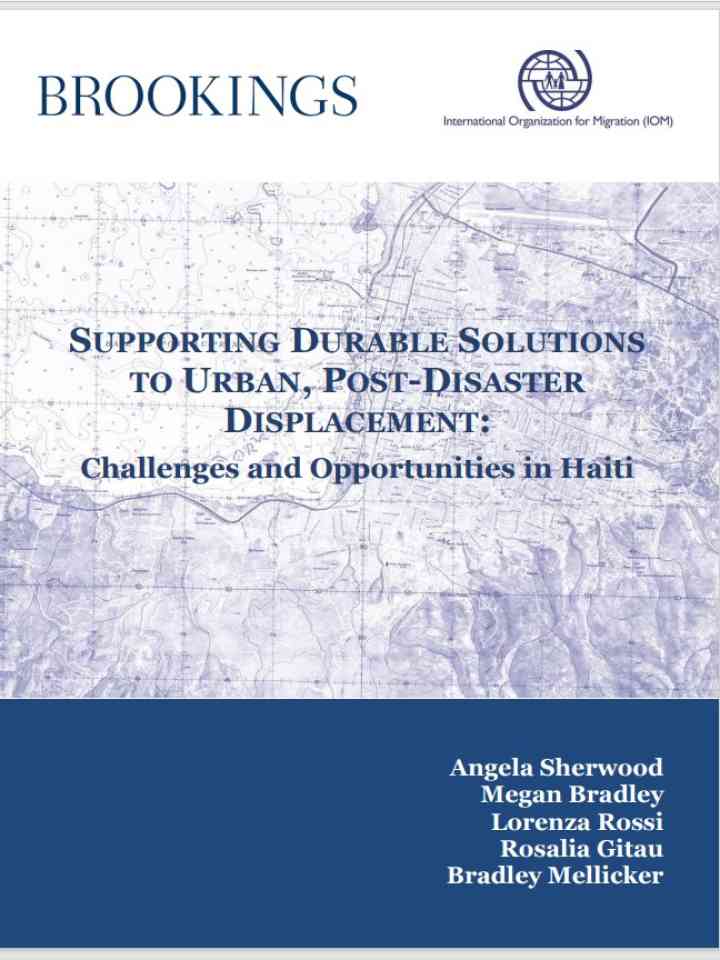Supporting Durable Solutions to Urban, Post-Disaster Displacement: Challenges and Opportunities in Haiti
The earthquake that struck Haiti on January 12, 2010 sparked a massive displacement crisis in Port-au-Prince and the surrounding metropolitan area, home to an estimated 2.8 million residents at the time. At the peak of the crisis, over 1,500 camps sheltering 1.5 million internally displaced persons (IDPs) were scattered across Port-auPrince and surrounding regions. In addition, thousands of IDPs sought shelter with friends and family. Four years later, approximately 147,000 IDPs remain in 271 camps. While these declines are dramatic, it is difficult to determine the extent to which those uprooted by the earthquake have been able to access truly durable solutions to their displacement, and what should be done to support solutions for those who are still displaced. In a deeply impoverished, urban, post-disaster situation, where vulnerability to future disasters remains high, the very meaning of the concept of "durable solutions" has been challenging to understand and to implement. However, it is clear that the sustainable resolution of displacement is essential to strengthening resilience, and ensuring that all Haitians can benefit equitably from development and enjoy their full range of human rights.
Accordingly, this study examines the question of durable solutions to displacement in Port-auPrince, recognizing that the challenges faced in Haiti may be a source of insight for responses to other urban, post-disaster displacement crises-which are expected to become more common in the future. The study draws on the results of focus groups in camps and communities, site visits, and in-depth interviews with government officials, donors, local and international NGO representatives, and the staff of international organizations, as well as a survey of 2,576 households (outside camps) in Port-au-Prince. 49.5% of respondent households indicated that they had to leave their homes because of the earthquake; 50.5% indicated that they were not displaced by the disaster. Of those who were displaced in 2010, 74% continue to identify themselves as displaced, even though they were not currently resident in a camp, underscoring that displacement is not limited to camp settings, and the long-term nature of the challenge of rebuilding "home" in the aftermath of disaster.
The main point of reference for this study is the 2010 Inter-Agency Standing Committee (IASC) Framework on Durable Solutions for Internally Displaced Persons (IASC Framework), which lays out rights-based principles and criteria to inform efforts to support durable solutions for IDPs the world over, including those uprooted by natural disasters. The Framework indicates that durable solutions (whether return, local integration or settlement elsewhere in the country) are achieved when IDPs "no longer have any specific assistance and protection needs that are linked to their displacement and can enjoy their human rights without discrimination on account of their displacement." Following the human rights-based approach of the IASC Framework, this study identifies specific challenges and obstacles to the pursuit of durable solutions for IDPs in Portau-Prince, and makes recommendations on the way forward. It also reflects on the broader challenge of effectively applying the IASC Framework in impoverished, post-disaster urban contexts.
Explore further
